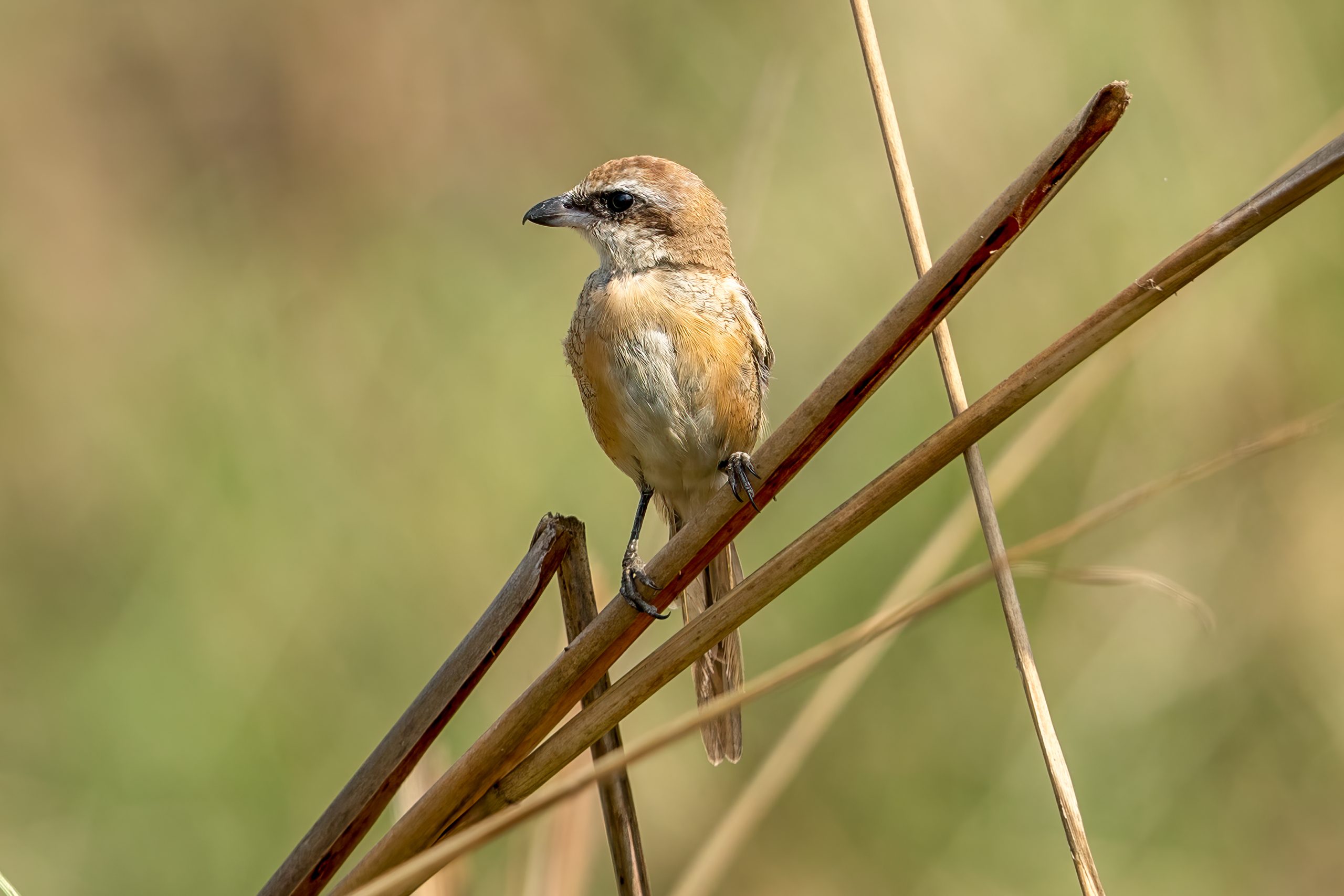Description
The long-tailed shrike (Lanius schach) is a distinctive and widely distributed passerine bird found across Asia, from Kazakhstan and the Himalayas through China, Southeast Asia, and into India. This bird is easily recognized by its striking plumage and elongated tail. Adults typically measure between 25 to 28 cm (9.8-11.0 in) in length, including the tail, and weigh around 30 to 50 grams (1.0-1.8 oz).
The plumage is usually a mix of black, grey, white, and rufous colors. It has a conspicuous black mask extending from the beak through the eyes. The back and upper wings are a rich, rufous-brown, while the underparts are a creamy white. The long, graduated tail is black with white edges. This species can be differentiated from similar shrikes by its longer tail and the distinctive rufous coloration. There is significant variation between subspecies, with some having an all-black head, and others having more rufous coloration on their back.
Diet & habitat
Long-tailed shrikes are versatile and adaptable birds, thriving in various habitats such as open countryside, farmland, scrublands, and forest edges. They are often seen perched conspicuously on shrubs, wires, and posts. Their diet primarily consists of insects and small vertebrates. They are known for their predatory behavior, often capturing prey such as insects, small mammals, birds, and reptiles. It employs a sit-and-wait hunting strategy, perching quietly before swooping down to catch its prey. Shrikes have a unique habit of impaling their catches on thorns or barbed wire, a behavior thought to aid in food storage and territory marking.
Nesting
The breeding season of the long-tailed shrike varies geographically but generally spans from April to June. These birds are known for their monogamous breeding pairs. The nest is typically constructed in dense shrubs or small trees and is made from twigs, grasses, and other plant materials, lined with softer substances. Females lay between 3 to 6 eggs, which are incubated primarily by the female for about 14 to 16 days. Both parents participate in feeding the chicks. The fledglings leave the nest approximately two weeks after hatching but remain dependent on their parents for some time thereafter.
Status
The long-tailed shrike is listed as least concern on the IUCN Red List. This status is due to its wide distribution and the adaptability of the species to various habitats, including human-altered environments. However, habitat destruction and fragmentation could pose future threats to some populations.





